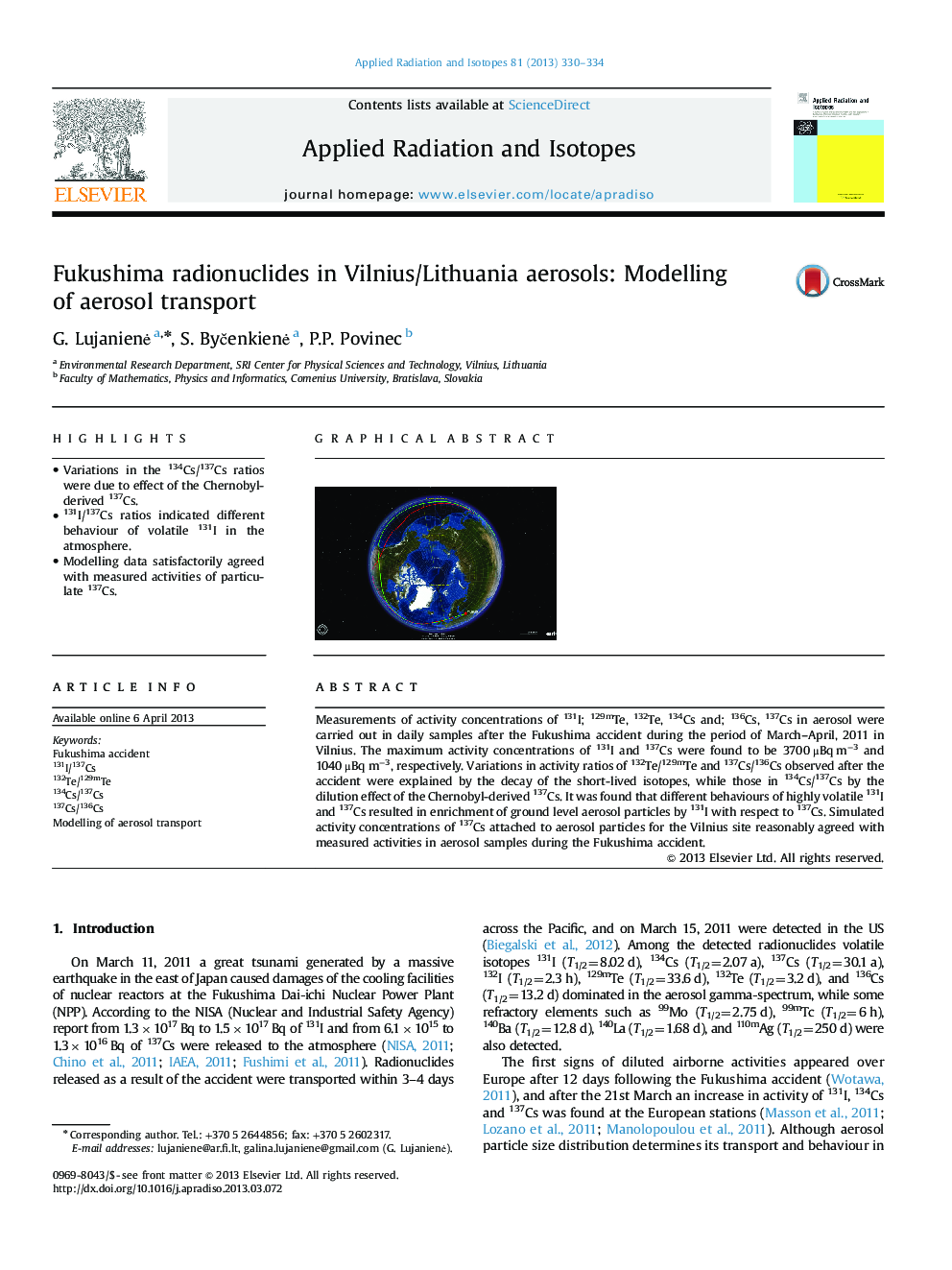| Article ID | Journal | Published Year | Pages | File Type |
|---|---|---|---|---|
| 1878780 | Applied Radiation and Isotopes | 2013 | 5 Pages |
•Variations in the 134Cs/137Cs ratios were due to effect of the Chernobyl-derived 137Cs.•131I/137Cs ratios indicated different behaviour of volatile 131I in the atmosphere.•Modelling data satisfactorily agreed with measured activities of particulate 137Cs.
Measurements of activity concentrations of 131I; 129mTe, 132Te, 134Cs and; 136Cs, 137Cs in aerosol were carried out in daily samples after the Fukushima accident during the period of March–April, 2011 in Vilnius. The maximum activity concentrations of 131I and 137Cs were found to be 3700 μBq m−3 and 1040 μBq m−3, respectively. Variations in activity ratios of 132Te/129mTe and 137Cs/136Cs observed after the accident were explained by the decay of the short-lived isotopes, while those in 134Cs/137Cs by the dilution effect of the Chernobyl-derived 137Cs. It was found that different behaviours of highly volatile 131I and 137Cs resulted in enrichment of ground level aerosol particles by 131I with respect to 137Cs. Simulated activity concentrations of 137Cs attached to aerosol particles for the Vilnius site reasonably agreed with measured activities in aerosol samples during the Fukushima accident.
Graphical abstractFigure optionsDownload full-size imageDownload as PowerPoint slide
